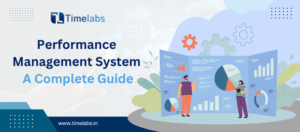Many organizations and human resource managers today have understood how important it is to build a system that stresses employee engagement as it keeps them attended, appraised, and validated in various ways.
While an organization does this to make sure the resources are felt involved, validated, and recognized through different practices of workforce engagement, they are increasingly feeling the need to go beyond the idea of inducing interest in the job to make employees feel enthusiastic and passionate about their work.
A noted scholar in the field, Gary Hamel, proposes in his work that a passionate employee contributes to value creation and endorses a mission at exceeding capacity and demonstrates a greater sense of association towards the organizational goals.
As per a study done by Integro Leadership Institute, about 78% of engaged employees show passion for the duties and responsibilities they are entrusted with. However, only 44% of these employees are passionate both about their job and the organization at the same time.
Another study on workforce productivity revealed that the employees that enjoy their work show a higher degree of engagement, while the employees that are emotionally attached to the job or have an emotional connection with the organization are most likely to show passion at work.
The Passion Pyramid
All these theories and ideas around building a culture of passion find a more expressive and confirming manifestation with the human leadership plan of the Passion Pyramid.
The modern HR software and people’s leaders are increasingly vouching for Passion Pyramid as a model that finely appoints and demonstrates the actions and traits that foster an environment of passion for driving greater levels of performance.
As an organization looks to build a passionate team, it should focus on these five areas starting from basic to the extreme level of passion instillation, attribution, and activism.
Passion Pyramid’s layers depicted from very basic to the top level of application:
- Building and fostering an environment of respect and trust
- Providing the opportunity for learning and growth
- Promoting communication that triggers and appoints emotional connect
- Infusing the idea of organizational Purpose, Vision, and Values in employees
- Creating a highly motivated, growth-driven mentality to build winning teams
How to Utilize Passion Pyramid Systems to Build Highly Functional Teams
Passion Pyramid allows human resource managers and team leaders to get a functional template of taskforce enablement and nurturing to build an environment that fosters more passion and enthusiasm among employees.
Going with the pyramid’s sequence of action, the HR department can progressively and competently build a passionate workforce by addressing the emotional factors and performance attributes across the stages and layers of passion programming for their employees.
At the first stage, it always starts with promoting trust and instilling a sense of mutual respect in employees. Then this is taken further to enhance the performing ability and level up the skills of employees to make them feel more confident and valued in themselves.
Once the workers are satisfied with what they are doing and have clarity of purpose, they are most receptive towards connecting with the organizational objective. Communicating with them the idea of shared values, goals, and aspirations gets them to closely associate with the organization.
As you progress in building a sense of association in them, the employees should be made responsible for driving and taking ownership of the organization’s values and work towards the underlying purpose and goal of it. With this, the workforce gets to show signs and reflexes towards agility and performance and develops a growth-driven approach and moving further; all they need is the right motivation and direction to demonstrate great passion and winning outcomes at work.
In Conclusion
Passion Pyramid is becoming an increasingly dominant phenomenon to build passionate teams that are highly accomplished and motivated to be a part of the organization and fervently deliver towards its objective. As organizations begin to make it a more inclusive part of the human resource development system, they may take it to gain a more prominent and persistent shape of a performance framework that goes much beyond just the virtues of employee training, development, and engagement, reverberating passionate performance at all levels.



